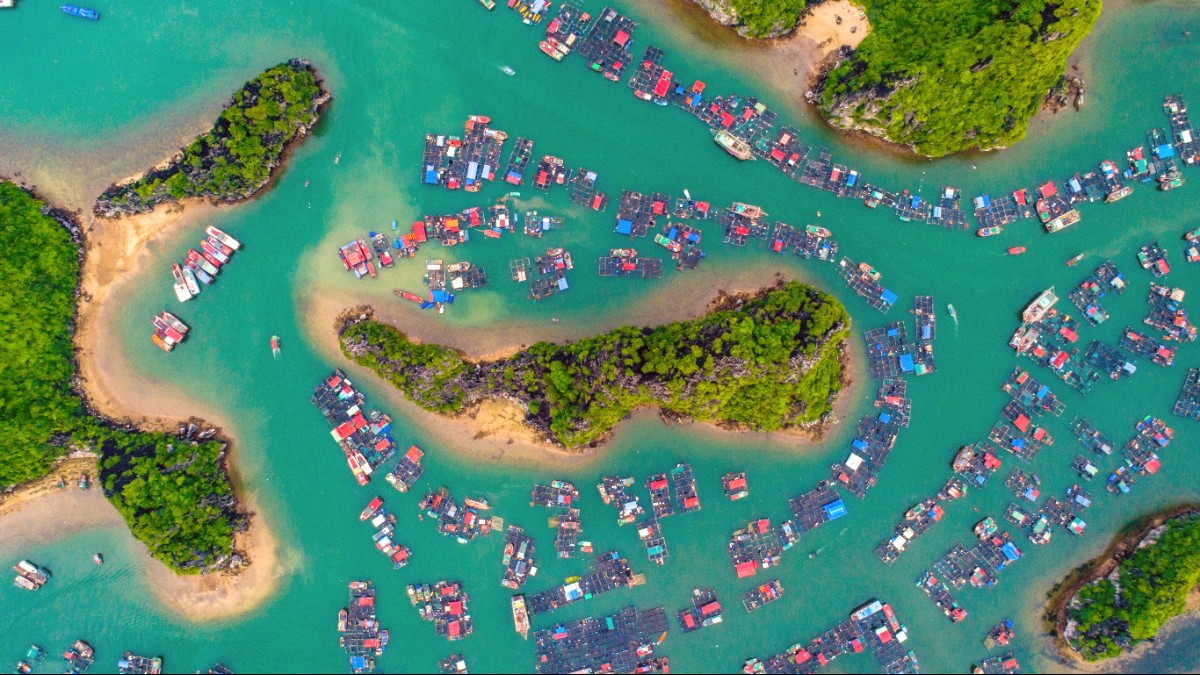
Northeast Vietnam, Vietnam
Spring (March - April): Temperatures are mild, 20-28°C (68-82°F). Humidity stays moderate, and rainfall stays light. This period brings pleasant conditions for touring.
Summer (May - August): Hot and humid conditions are common, with temperatures typically 28-35°C (82-95°F). The heat index often makes it feel warmer. This season brings heavy rainfall and a risk of typhoons and tropical storms, especially from July to September.
Typhoons and tropical storms pose a risk from July to October. These storms cause flooding, flight cancellations, and closure of bay tours, like those for Lan Ha Bay.
Travelers should check weather forecasts regularly when planning trips during these months.
October - December & March - April
Weather conditions are excellent for sightseeing and outdoor activities, with lower humidity and less rain.
Accommodation and tour prices are higher. Crowds grow, especially around public holidays.
January - February & September
Fewer crowds make for a relaxed experience and potentially lower prices.
January and February often bring cool, foggy weather. September can still see tropical storms.
May - August
Prices drop significantly, and tourist numbers are lowest. The landscapes appear lush and green.
High heat and humidity persist. Heavy rainfall and typhoon risk can disrupt travel plans.
Citizens of 80 countries apply for an e-Visa. This visa permits a single entry and stays of up to 90 days. Apply online through the official Vietnam Immigration Department portal.
Citizens of certain countries do not need a visa for short stays (e.g., UK, Germany, France, Spain, Italy for up to 45 days; Japan, S.Korea, Russia for 15 days; ASEAN countries for 30 days). Confirm the latest official information.
Your passport stays valid for at least 6 months beyond your intended departure date, with two blank pages.
Carry a printed copy of your e-Visa or the Visa on Arrival (VOA) approval letter.
For VOA, two recent photos (4x6 cm, white background) are usually needed. An e-Visa asks for a digital photo upload.
Immigration officials may request proof of your return or onward travel.
E-Visa is around USD 25. VOA stamping fee is USD 25 (single entry) or USD 50 (multiple entry), paid in cash.
The official currency is the Vietnamese Dong (VND), symbol "đ".
Banknotes come in 1,000 to 500,000 VND. Exchange foreign currency (USD, EUR, GBP) at banks, authorized exchange counters, or gold shops (sometimes better rates).
Approximate daily averages per person, excluding international flights.
Haiphong has several hospitals including Viet Tiep Friendship Hospital and International Hospital. Private hospitals generally have better facilities and English-speaking staff.
Haiphong is generally safe for tourists. Violent crime occurs rarely. Practice your usual precautions regardless of neighborhood.